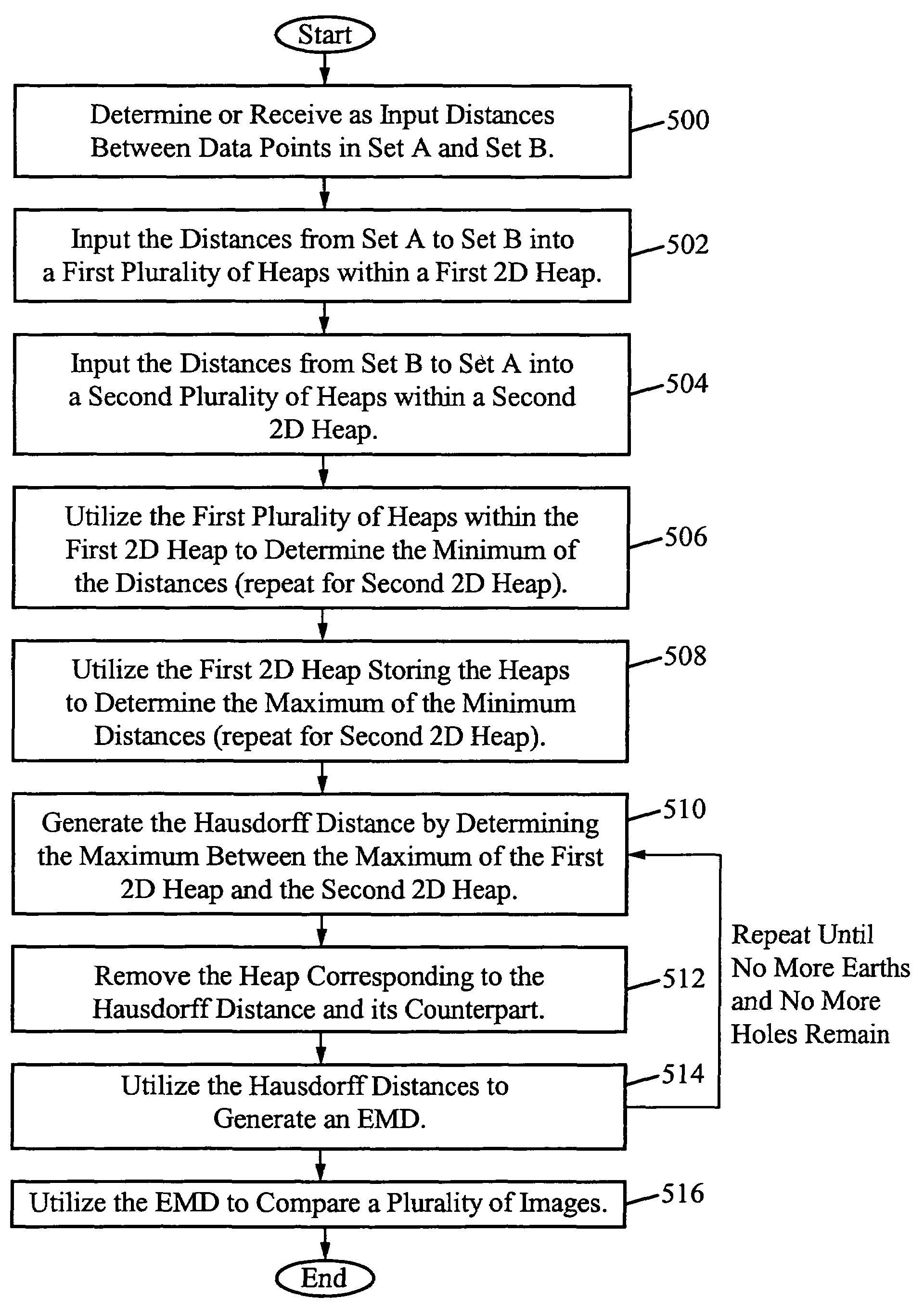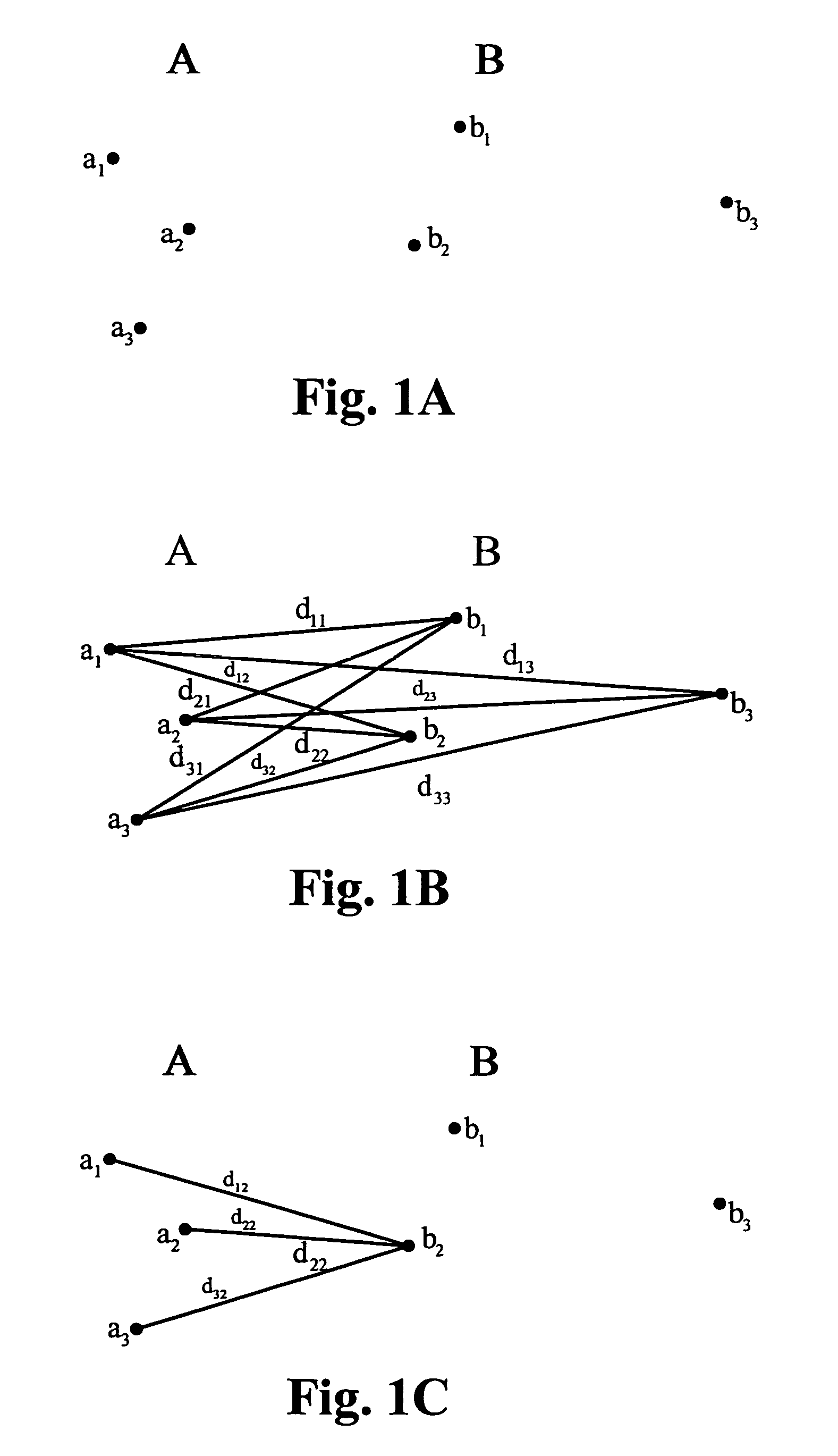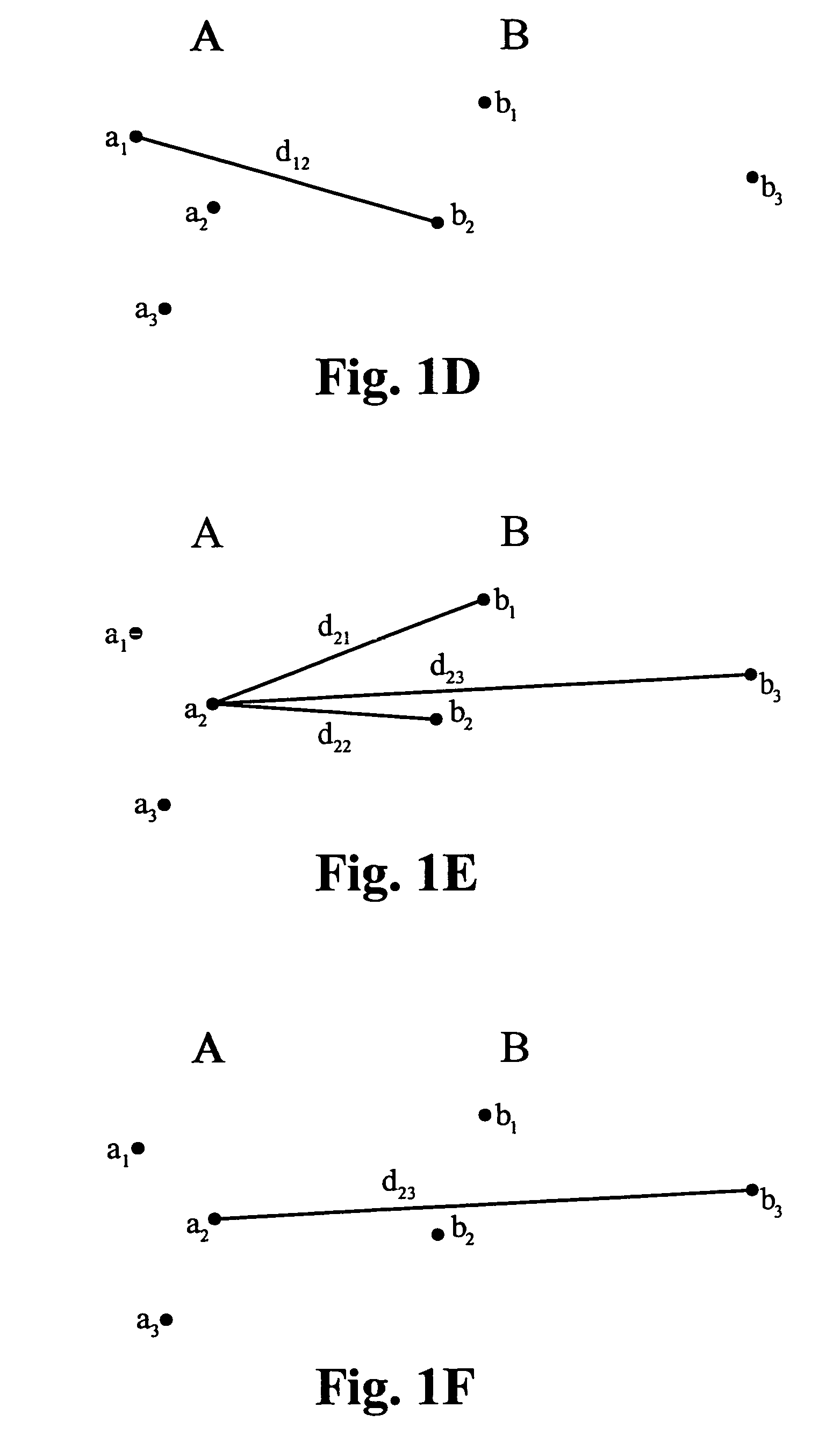Fast generalized 2-Dimensional heap for Hausdorff and earth mover's distance
a 2d, earth moving distance technology, applied in the field of data processing, can solve the problems of difficult and inefficient data management, impractical to store all images, and high manual labor, and achieve the effect of shortening the earth moving distance, and increasing the similarity
- Summary
- Abstract
- Description
- Claims
- Application Information
AI Technical Summary
Benefits of technology
Problems solved by technology
Method used
Image
Examples
Embodiment Construction
[0027]Speed is always an issue when using distance measures that are composites of underlying distances, like the Hausdorff distance or the Earth Mover's Distance (EMD). The method described herein addresses the issue of rapid calculation of Hausdorff distance and of rapid construction of the EMD from the Hausdorff distances. Generally, the method serially or in parallel implements an array of decision making processes, like a lattice gas or neural net, which features a lightweight per node processing using winner-take-all without modification or other more complex operations with additional processing. An efficient update structure is also utilized. With the improvements in speed, more efficient applications are possible such as image comparison and content based image retrieval.
[0028]A Hausdorff distance is the maximum distance of a set of data points to the nearest data point in another other set of data points. Specifically, the Hausdorff distance from a first set, set A, to a s...
PUM
 Login to View More
Login to View More Abstract
Description
Claims
Application Information
 Login to View More
Login to View More - R&D
- Intellectual Property
- Life Sciences
- Materials
- Tech Scout
- Unparalleled Data Quality
- Higher Quality Content
- 60% Fewer Hallucinations
Browse by: Latest US Patents, China's latest patents, Technical Efficacy Thesaurus, Application Domain, Technology Topic, Popular Technical Reports.
© 2025 PatSnap. All rights reserved.Legal|Privacy policy|Modern Slavery Act Transparency Statement|Sitemap|About US| Contact US: help@patsnap.com



